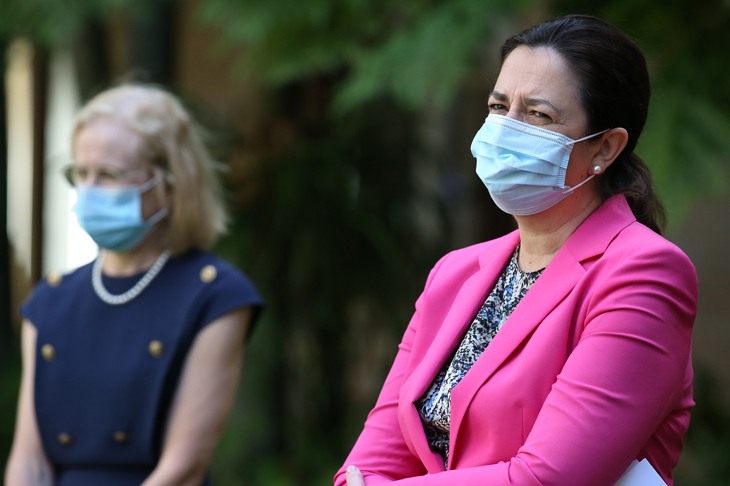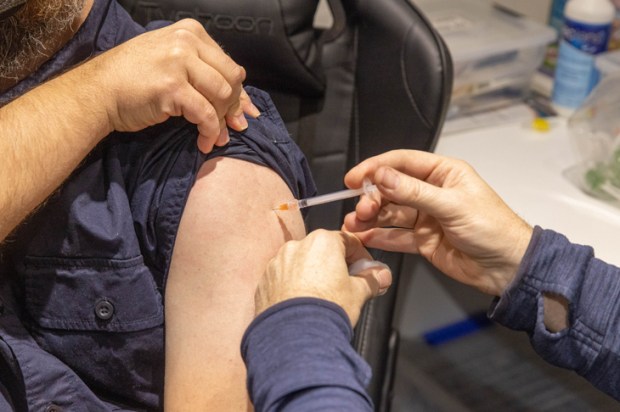Lockdowns have violated three core tenets of public health policy: prioritising the long term over the short, focussing on the totality of health outcomes and not just on one disease and weighing both the harms and the benefits of medical interventions in the balance of decision-making. Responding to the article by James Allan on 20 March requiring five tests before imposing lockdowns, one reader dismissed lockdown-critical articles in The Spectator Australia as ‘mindless right-wing claptrap unsupported by evidence and common sense’. I can only conclude that income-protected members of the Zoom class who self-identify as socially progressive need to invent a right-wing bogey as a salve to their conscience for the immense harm done by lockdowns to the poorest and most marginalised and vulnerable peoples of the world. Dr Sebastian Rushworth, a practising physician in a Stockholm hospital who is so good that Amazon cancelled his book on Covid, writes in his internationally well-regarded blog: ‘Lockdowns are inherently racist and elitist, with unclear benefits but proven harms’. He reports on a new study from the Karolinska Institute using UN data that as many people have died as a result of lockdowns as of Covid. The latter have died mostly in rich countries and been old, while most of the former were younger people in poor countries who succumbed to malnutrition, lack of vaccination with childhood immunisation programs shut, and treatable diseases like tuberculosis (TB) and HIV.
The face of Covid in rich countries is an elderly man with multiple co-morbidities; among the biggest victims of prolonged lockdowns are children in poor countries. On 18 March, the Pew Research Center reported that India’s middle class (earning US $10-20 per day) shrank by 32 million last year compared to pre-pandemic predictions, while the poor (under $2 daily) jumped by 75 million, accounting for 60 per cent of the global retreat on both measures. An April 2020 study from the Johns Hopkins School of Public Health warned that, with health services disrupted by the obsession with Covid, infant mortality could go up by 1.2 million by October in poorer countries, and maternal mortality by 56,700. People ‘fear hunger may kill us before coronavirus’. According to a World Food Programme study last April, the number of people suffering from acute hunger would jump from 135 million pre-pandemic to 265 million by the end of 2020. Childhood death rates rose in 2020 for the first time in decades. Therefore the number of total years of life lost to lockdown is significantly greater than that lost to Covid-19.
A UNICEF report published in October warned ‘the harmful effects… will not be distributed equally. They are expected to be most damaging for children in the poorest countries, and in the poorest neighbourhoods, and for those in already disadvantaged or vulnerable situations’. The additional deaths of children under five would climb over two million in just 12 months and there would be an extra 200,000 stillbirths. An additional 150 million children could be pushed into ‘multidimensional poverty’ by year’s end, with diminished access to education, health care, housing, nutrition, sanitation and water. School closures affected 1.6 billion children and youth globally, with 463 million without access to remote learning platforms. A follow-up report on South Asia on 17 March noted that against 186,000 people who had died with Covid, the disruption in health services had caused 239,000 maternal and child deaths.
In India, which comprises 70 per cent of South Asia’s population, with 149,000 deaths Covid-19 was the 13th deadliest killer last year, with TB, diarrhoea and diabetes accounting for 2 to 4 times as many deaths. The 216,000 suicides killed 50 per cent more Indians than Covid and we can be certain that lockdowns were both a direct and indirect cause of suicides. Lockdowns have forced 500 million children around the world out of school and more than half of them are in India. Pointing this out on the release of a report on 25 February, Sunita Narain, director-general of the Centre for Science and Environment, said more than half the additional 115 million people pushed back into extreme poverty live in South Asia. India, she said, was all set to usher in a 375-million strong ‘pandemic generation’ of children up to age 14 likely to suffer long-lasting impacts like increased child mortality, being underweight and stunted and educational and work-productivity reversals.
The New York Times had a long report on 3 August detailing lockdowns’ collateral harms. Dr Pedro Alonso, director of the WHO’s global malaria program, warned that with public health attention monopolised by Covid, disruptions to global supply chains for medicines and medical equipment and interruptions to immunisation programs and screenings, two decades of progress on TB, HIV and malaria was at risk of reversals. TB is the world’s deadliest infectious disease, killing around 1.5 million each year. TB diagnoses in South Africa, Mozambique, Mexico and India (which accounts for 27 per cent of the world’s cases) fell by 50-75 per cent after the pandemic struck. Just three months of lockdowns would increase TB cases by another 6.3 million over ten months and deaths by 1.4 million. Similarly, access to preventative drugs to stop HIV-positive pregnant women from passing the infection to their babies in the womb, if delayed by six months, could increase HIV infection in children by around 150 per cent in sub-Saharan Africa.
On 1 February, BBC’s India business correspondent Nikhil Inamdar reported: ‘Covid-19 has ravaged the country, shrunk its GDP, sent unemployment soaring and added to the distress of a banking sector that was already in crisis’. Actually, no, Covid-19 doesn’t possess such omnipotent powers. Rather, lockdown measures to combat the disease proved deadlier than the disease itself. Meanwhile on 23 December, Forbes published a list of fifty doctors, scientists and healthcare entrepreneurs who’ve became pandemic billionaires. Covid business has boomed for cabinet cronies in the UK and for consulting firms in Australia. Amazon, Facebook and Google increased their share of US advertising dollars to more than half in 2020. The increased time and money spent on these platforms in turn fattens the consumer data collected by them and increases their market appeal for advertisers. This just might influence their decisions on censoring lockdown-critical commentary.
Yet millions of Covidians are brainwashed enough to believe that opposition to all this is ‘right-wing claptrap’. Sigh.
Got something to add? Join the discussion and comment below.
Get 10 issues for just $10
Subscribe to The Spectator Australia today for the next 10 magazine issues, plus full online access, for just $10.
You might disagree with half of it, but you’ll enjoy reading all of it. Try your first month for free, then just $2 a week for the remainder of your first year.














Comments
Don't miss out
Join the conversation with other Spectator Australia readers. Subscribe to leave a comment.
SUBSCRIBEAlready a subscriber? Log in